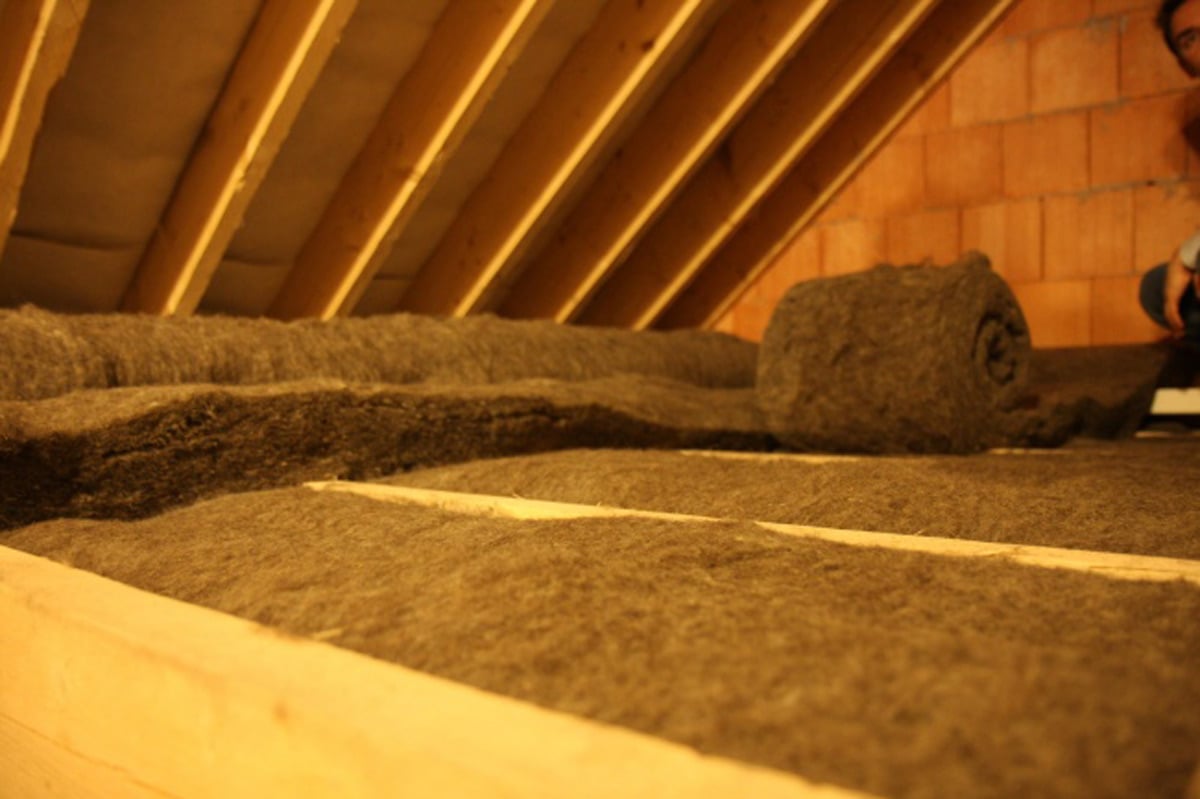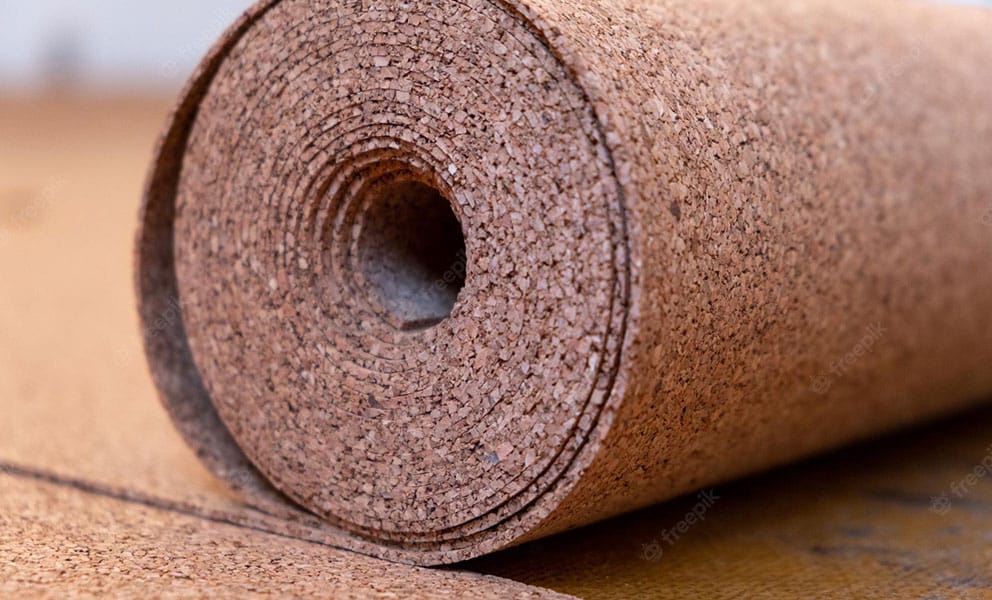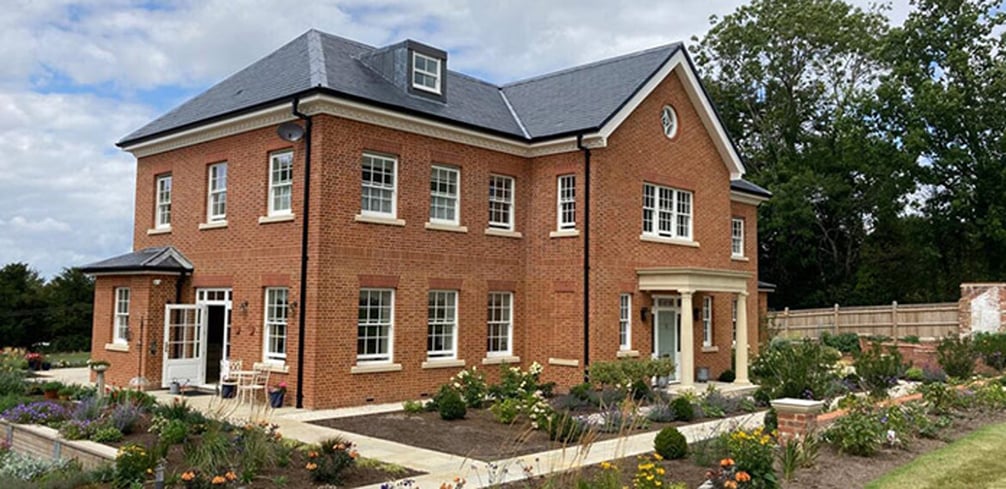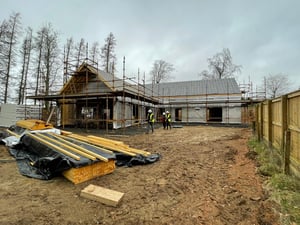Exploring Natural Insulation Alternatives for Your Self Build Project
When embarking on a Self-build project, one of the critical decisions you must make is selecting the suitable insulation material. Traditional options like Polyisocyanurate (PIR) foam insulation have been widely used due to their excellent insulating properties.
However, with a growing emphasis on sustainability and eco-friendliness, natural insulation alternatives have gained popularity among conscientious self-builders.
In this article, we’ll explore some benefits of natural insulation alternatives to PIR.
SHEEP’S WOOL INSULATION
Sheep’s wool insulation is a natural and renewable material that offers very good thermal performance. It has been used for centuries in various applications, including clothing and home insulation.
Sheep’s wool, like many natural fibre-based insulation products, is Vapour Permeable, making it particularly effective at regulating moisture, absorbing and releasing water vapour without losing its insulating properties. This feature helps maintain a healthy indoor environment by minimising condensation and mould growth.

HEMP INSULATION
Hemp insulation is made from the fibres of the industrial hemp plant, which is fast-growing and requires minimal pesticides and fertilisers. Hemp insulation is environmentally friendly and boasts impressive thermal and acoustic properties.
It provides effective insulation against cold and heat, contributing to energy efficiency in your self-built home. Additionally, hemp insulation is breathable, allowing moisture to escape, which can help prevent dampness and improve indoor air quality.
CELLULOSE INSULATION
Cellulose insulation is derived from recycled paper and cardboard, making it an excellent choice for those seeking a sustainable option. The material is treated to resist the surface spread of flame, pests, and mould. Cellulose insulation is blown or packed into wall cavities, attics, roofs, and floors.
Due to the nature of its loose fibres, Cellulose insulation is excellent for installing around smaller gaps and voids in the structure, creating a seamless barrier and excellent continuity during installation.
This increases the thermal continuity at junctions which can be very beneficial towards the overall heat loss of the building, making it a versatile choice for self-build projects.
CORK INSULATION
Cork is a renewable and biodegradable material derived from the bark of cork oak trees. It offers a unique blend of insulation properties, including low thermal conductivity and sound absorption. Cork insulation is available in various forms, such as boards, panels, and granules, allowing flexibility in installation methods.
Its vapour permeable properties and option of an approved installation method using a combination of adhesive and mechanical fixings make it an excellent natural alternative for masonry or stone walls. Its natural resistance to pests and moisture makes it an eco-friendly insulation option.

WOOD FIBRE INSULATION
Wood fibre insulation is made from recycled wood waste, such as sawdust and wood chips. It is an excellent alternative for those seeking insulation with low environmental impact. Wood fibre insulation has good thermal properties and is often used for thermal and acoustic insulation. It’s breathable, helping to regulate indoor humidity levels and prevent moisture-related issues.
FLAX INSULATION
Flax insulation, also known as linen insulation, is crafted from the fibres of the flax plant. Similar to other natural materials, flax insulation offers excellent thermal performance and moisture regulation.
It has a relatively low environmental impact, as flax requires fewer chemicals and resources to cultivate. This insulation type can be used in walls, roofs, and floors, creating a comfortable and energy-efficient living space.
STRAW
Straw insulation, a natural and renewable material derived from harvested grain crops, offers a compelling solution for eco-conscious builders.
Its thermal efficiency keeps indoor spaces cosy year-round, while its ability to manage moisture minimises mould and maintains healthy indoor environments. By transforming agricultural by-products into effective insulation, straw contributes to sustainability and reduces carbon footprint.
Whether incorporated through bales, loose fill, or matting, straw insulation showcases the harmony of ancient wisdom and modern construction, making it an eco-friendly choice for those seeking energy-efficient and environmentally conscious self-build projects.
Many of the natural insulation options available on the market come with low to zero toxins, reducing the need for protective clothing and the potential for irritants, making them easy to handle on-site and dispose of any waste safely, minimising the environmental footprint of your project.
Some of the products discussed offer added thermal mass, which is good for storing heat and can be available in multiple densities, making them versatile for use across different areas of the build, whether that be a flexible roll in your loft or a semi-rigid slab, friction fitted within the wall. While others come as loose-blown insulation that will fill every gap in the construction to give you a continuous thermal envelope to improve efficiency.

As with all products, professionals in the industry should always check their suitability for your construction method and site; not all products are equal, and the benefits of each need to be checked against your construction method, vapour permeability and ventilation requirements. This could be through advice from your Architect or Local Building Control Body.
A simple check for BBA (British Board of Agreement) or BRE (Building Research Establishment) certification on any products you plan on considering is also a good place to start.
As with most modern building products, investigating your preferred systems, and educating yourself as best you can, will always help when it comes to self-build. You are then fully prepared for any questions or obstacles you may encounter when it comes to self-build finance, mortgage ability and insurance.
When selecting an insulation material for your self-build project, consider your home’s specific requirements, budget, and commitment to sustainability. By choosing a natural insulation alternative to PIR foam, you’re contributing to a greener future and creating a comfortable and energy-efficient living space for years to come.



